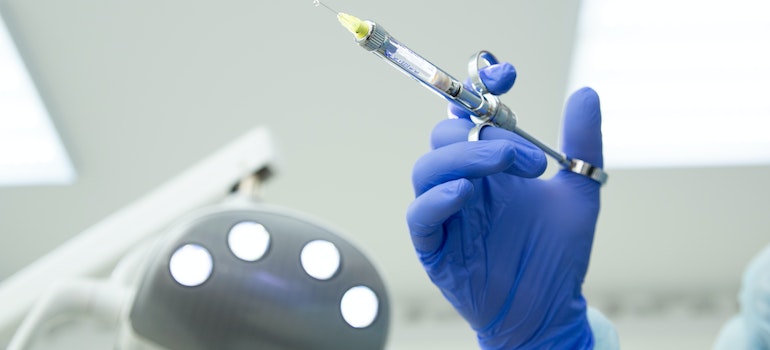In the world of medicine, both opiates and opioids have a significant place. A general (and any other type of) surgery, as well as every field that touches the subject of the physiology of pain, relies a lot on these substances. But, since they target the brain on a molecular level, they became a quite common guest in conversations about mental health and addictions. In order to be a part of those conversations and understand them to your benefit, you need to know the difference between these two terms (and it’s not just a few letters). Harmony Ridge Recovery Center WV explains everything.
Is T that different than D, and how are they related?
It’s not surprising that a lot of people mix the terms opiates and opioids. After all, they are, in some way, chemical relatives, and they do have a common ancestor. Opium was the first of its kind—an extract of the poppy flower with ”magical” powers to solve pain problems. Ancient Egyptians, Romans, and Chinese were all familiar with it. It was a common practice to give a small amount of opium to children that suffered from diarrhea or tooth pain. Later in history, British people rediscovered its amazing pain-killing properties and started massively using the infamous ”tincture of laudanum” to help people of all age release pain.
Soon enough, they found out that this compound was not as harmless as it seemed at first, as a lot of patients started getting highly addicted to the tincture. This kind of addiction was somewhat socially acceptable for around 200 years until people started using needles as a way of application. That’s how the journey of experimenting and discovering different derivatives began, and that’s how both opiates and opioids first saw the light of day.

Opiates and opioids are similar but not the same
Opiates are older substances in the historical succession, meaning – they are fully natural. However, even if you can find all of them in the poppy plant, they are far from harmless. This is clear just by looking at the list of opiates, which includes:
- heroin
- codeine
- opium
- morphine
But, opiates have been forgotten as a term in a lot of medical literature since they only include naturally derived substances. As neuroscience evolved, a lot of experiments involved trying to discover the origin and simulate the effect of morphine. Some of the experiments took a surprising turn and led to the discovery of certain peptides that don’t chemically look identical to morphine but can bind to the same receptors in the brain.
Opioids include opiates, but opiates don’t include opioids
As the new substances multiplied from experiment to experiment, a new umbrella term that we now use worldwide found its place in science. It is, of course, the term opioids. Opioids include both synthesized (in the lab) and naturally derived substances that have the same effect as morphine. The list of opioids is long, but some of the most famous are:
- methadone
- oxycontin
- loperamide
- hydrocodone
- meperidine
- fentanyl
- dextromethorphan
Both opiates and opioids have a bad reputation in America
Similar to the British use of opium, morphine became quite popular in America in the second half of the 19th century. Injured soldiers were often given morphine to numb the pain of extensive wounds they’d gotten in battle. That was the first time America had to develop some kind of stimulants rehab in order to help those soldiers. Later, as medicine developed, these compounds found a significant place in anesthesiology and surgery.
Opioids are, to this day, one of the most effective components of general anesthesia. However, American clinical practice took a huge turn to a negative side once the doctors started overprescribing opioids and once some of these potent substances became available over the counter.

The epidemic of opioid addictions
Of course, the doctors had the best intention since nothing can relieve a patient from pain as effectively as opioids. But, that practice led to an epidemic of opioid addictions that we battle with to this day still. In contrast, the other countries that limited the use of opioids to only necessary amounts now have the best and most effective anesthesia in their hospitals and surgical practices.
Why is the opioid epidemic a problem?
First of all, opioids have become almost irreplaceable in modern anesthesiology. But, since the epidemic of opioid addictions, doctors have had to replace good and effective opioids with some other, less effective substances. It’s forbidden to give a former addict even a small dose of opioids since it can trigger relapse and other complications (which collides with the ”primum non nocere,” or ”first, do no harm” principle in medicine). This leaves the major issues in anesthesiology up for improvisation with some less effective pain-killing substances, which is not good.
Second, addiction to opioids is one of the hardest psycho-physical drug addictions. Experts at the drug rehab Huntington WV team suggest that withdrawal symptoms from both natural and synthetic opioids are one of the worst to deal with. Prescription drugs bind to the same receptors as heroin, for example, and they work by the same mechanism to cause dependency.
The difference in the structure of opiates and opioids dictates the difference in effects
As you know, not all opiates and opioids have as bad of a name as heroin, even though they have a quite similar way of causing dependency. Each of them has a different molecular structure. The key molecule we compare all the others to is morphine because it has the main components that are responsible for binding to opioid receptors in the brain and because all the other molecules from the family have the same binding components.
Receptors play a major role
There are three types of opioid receptors that we’ve discovered so far. They are all similar, but they all have slightly different conformations that make a huge difference in the effect different opioids and opiates make when binding to them. For example, both opioids and opiates classify into three pharmacological groups according to their interaction with the receptors. This classification is way more important for us dealing with substance abuse treatment in WV than the historical distinction between opiates and opioids. All the substances from the family of opioids can be divided as:
- agonists—substances that bind and activate the receptor
- partial agonists— substances that bind to the receptor but activate it in an extremely low manner (so low that they actually cause the opposite effect since they are taking the spot for the true agonists)
- antagonists— substances that bind and block the receptor
The interesting part is that one substance can be an agonist to one type of receptor and an antagonist to the other. This is where the huge pharmacological diversity in effects comes from within this family of substances. This is, in fact, why some opiates, for example, codeine, are so harmless they can be found in cough medicine, while some others, like heroin, cause strong addictions and are considered illegal.

Some opioids can help in the treatment of addiction to other opioid compounds
This diversity in binding to opioid receptors is the reason why some opioids are commonly used in addiction treatment practice when it comes to addiction to other, more potent, and dangerous opioids. Experts from our drug rehab Charleston WV team suggest that it’s inhumane to keep heroin addicts in the treatment facility without proper substitutes.
Their withdrawal syndrome can be so severe they might try to harm themselves. Instead, it’s common practice to give them codeine or methadone to go through it. As these are partial agonists to the opioid receptors, they can ease the ”hunger” of a physically addicted brain, but they don’t harm the patient. Also, the substitutes are easier to reduce in dosage over time. So, this is the most painless way to deal with physical symptoms and prepare the patient for stages of individual therapy for addiction and the psychological part of the process.
Some opioids can be an antidote
The difference between groups of opiates and opioids is most obvious when it comes to the substances that counterpart one another. In the case of heroin poisoning, we give naloxone or naltrexone to the patient as an antidote. Heroin is an extremely potent opiate that can cause extreme respiratory and cardiovascular inhibition when it binds to its receptors, which is lethal to the consumer.
On the other hand, naloxone and naltrexone are synthetic opioids that bind in a completely different way. And, due to their antagonistic properties, they are able to successfully counterpart the harmful and deadly effects of their opiate cousin.

Effects on the body – the difference in speed and potency
Different molecular structures in opioid and opiate families, as well as among all members, result in various effects on the body. The important part of the structural theory is that different groups and side chains on a molecule influence its ability to travel through the BBB (blood-brain barrier) and its speed in the bloodstream. This is important because substances that go through the BBB faster have a bigger impact on brain activity.
Morphine, for example, has the ability to cross the blood-brain barrier. Since it’s the most representative substance among all opioids, its effects are more or less common in all of them. The use of morphine has various effects on the brain and, consequentially, on the body. It induces:
- euphoria
- respiratory depression (the patient breathes less frequently and not as deeply, which leads to lower oxygen levels)
- bradycardia (slower heart rate – meaning even less oxygen to the cells)
- nausea and vomiting
- constricted pupils (the so-called ”pinpoint pupils” are common among the residents of a drug rehab center in Buckhannon WV, and can be a warning sign of drug abuse if you see it in a loved one)
Other opiates and opioids have similar effects, but their speed and potency determine their extent of them. Heroin is one of the fastest opioids to travel through the BBB and through the bloodstream, which is why it causes more severe effects in lower doses.
The effects on the mind and its significance for addiction therapy
The euphoric effect is one of the main factors why opioids are great as the painkiller family. But it’s also the main factor and motivation for abuse in the first place. The major component of the opioid effect after the intravenous application is a soothing and calming sensation of satisfaction followed by the phenomena of ”abdominal orgasm.” This is extremely helpful for hospitalized patients that experience severe pain and fear and anxiety that follow that pain.
But, this is also the infamous ”rush” that attracts so many drug addicts to try heroin, even though its aftertaste is not as fun. After a few of those seemingly harmless rushes, a person develops a tolerance. Meaning their receptors need more drugs more frequently to produce the same effects. That tolerance then grows into physical and psychical addiction, which manifests in withdrawal syndrome and psychological affection and dependency that are extremely hard to overcome.

CBT can help
Both opiates and opioids cause severe mental dependency on the drug that the person abuses. This is one of the most complex psychological conditions, and there are many different approaches to it. One of the best approaches is cognitive behavioral therapy for substance use disorders (CBT). This is a kind of treatment that helps a patient realize their destructive and negative patterns of behavior and how to deal with them.
A person that abuses opioids often does it as a way to numb the mental pain they are feeling, which is often a product of not dealing with some negatives in their life. That’s why trained therapists help the patient uncover those negatives so they’d together kill the motivation for the substance abuse in the first place.
If you, or someone you love, have a problem with opiates and opioids abuse, please make sure to seek professional help as soon as possible. We, as professionals at opiate rehab in West Virginia, will always be there to consult or advise when needed, and we’ll be happy to lead you on a bumpy road to personal peace and harmony.
References:
- https://www.drugabuse.gov/publications/drugfacts/prescription-opioids
- http://www.sciencedirect.com/science/article/pii/B9781437716795000156
- https://web.archive.org/web/20160607203830/http://www.cpso.on.ca/CPSO/media/uploadedfiles/policies/policies/Opioid_report_final.pdf



